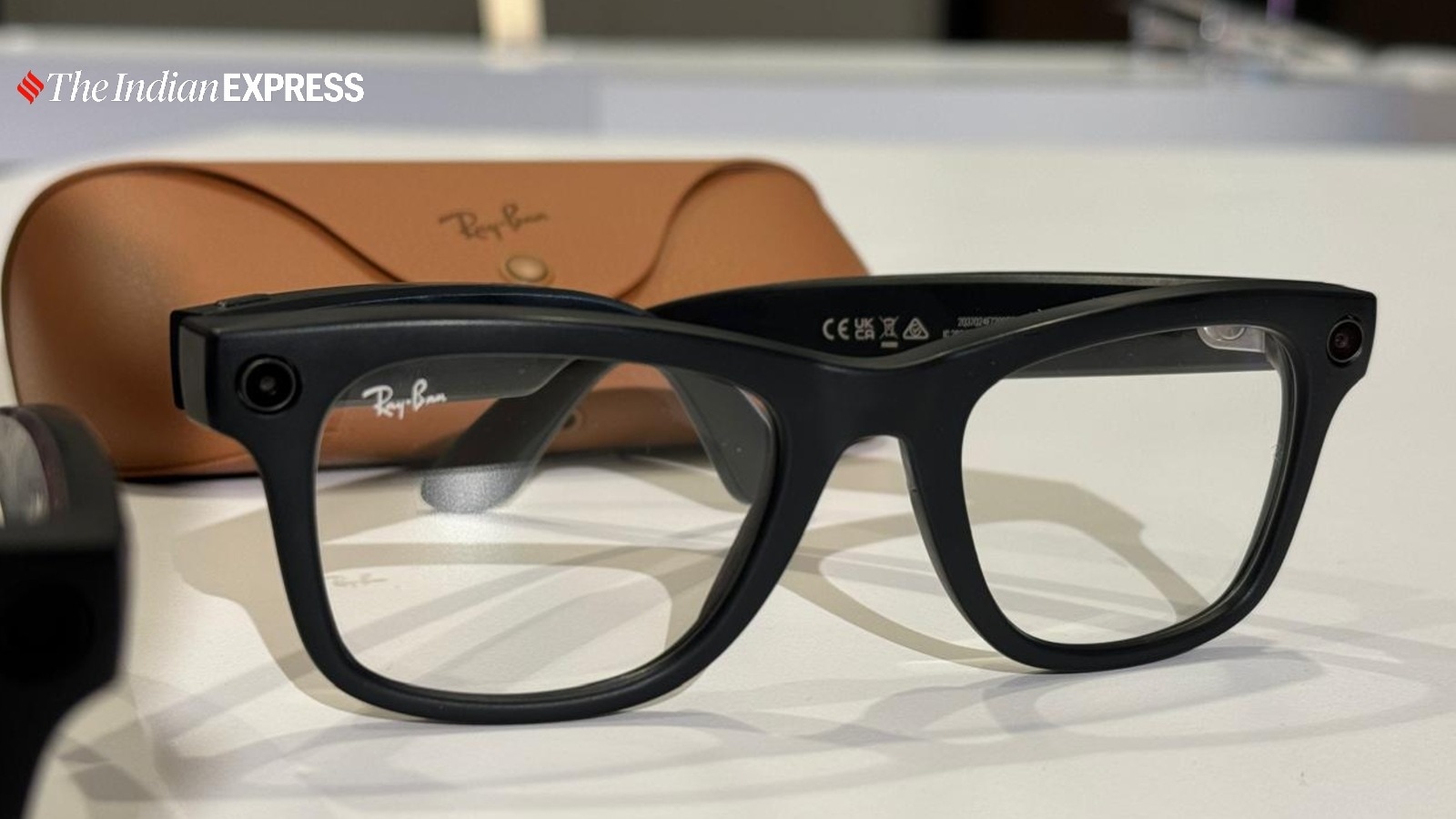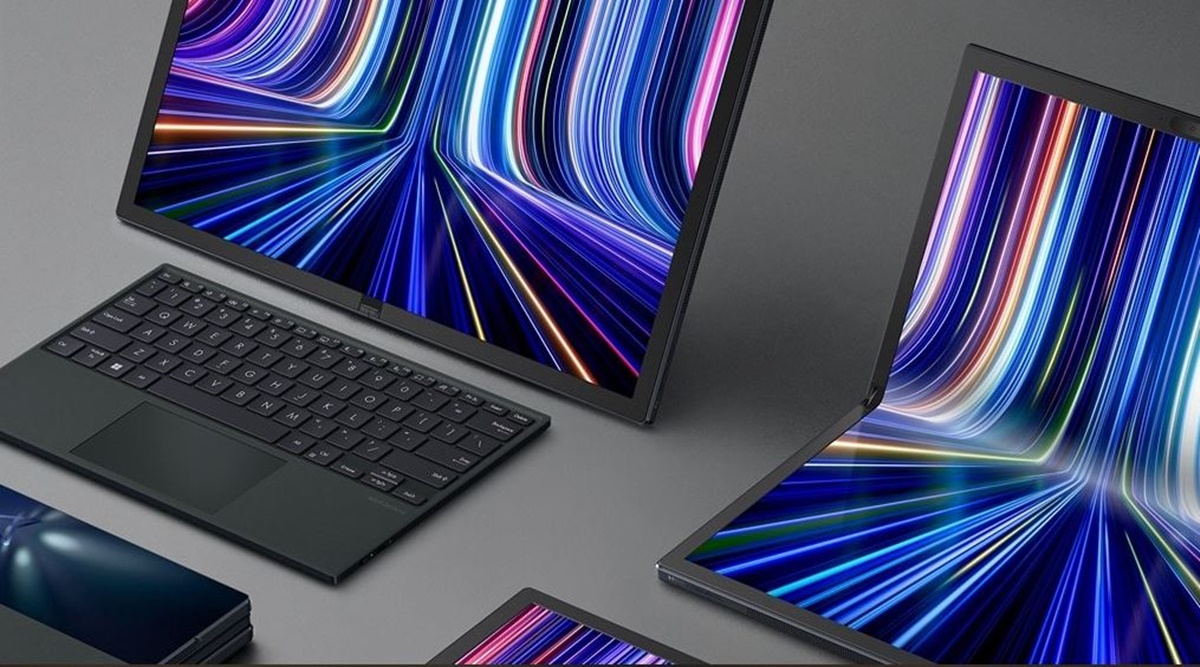Alex Katouzian, Senior Vice President and General Manager of Mobile Compute & XR at Qualcomm Inc, Monday expressed confidence that smart glasses will become the next big category in the consumer tech space.
“As of today, many people are carrying not one device but multiple devices like watches, phones, and earbuds. Glasses will be another smart device that people carry,” said Katouzian.
Katouzian’s confidence in the smart glasses segment comes after the surprise success of Meta’s glasses developed in partnership with Ray-Ban. Although Meta has explored both virtual and augmented reality, it was the Ray-Ban smart glasses that caught consumers’ attention globally, despite not being advanced AR glasses. Instead, the Ray-Bans combine the Meta AI voice assistant with basic hardware and a classic design, which helped the company sell millions of units. Ray-Bans are wirelessly linked with a smartphone.
“You have seen Meta Ray-Bans and Oakleys; they exist today at a scale much larger than last year or the year before. The volumes have increased six to seven times compared to what we shipped previously,” Katouzian told indianexpress.com at the Snapdragon for India event in Delhi.
AR1 Plus Gen 1 chip
The reason Qualcomm, the leading maker of smartphone processors, is making a bigger push into smart glasses is probably because it developed the processor that powered the Meta Ray-Ban glasses. Now, that experiment seems to have paid off, and the company is launching a new chip specifically designed for the next generation of smart glasses.
 Alex Katouzian, Senior Vice President and General Manager of Mobile Compute & XR at Qualcomm Inc. (Image: Anuj Bhatia/The Indian Express)
Alex Katouzian, Senior Vice President and General Manager of Mobile Compute & XR at Qualcomm Inc. (Image: Anuj Bhatia/The Indian Express)
The AR1 Plus Gen 1 chip is an upgrade from the processors used in smaller smart glasses, such as the Meta Ray-Bans. The new chip is not only smaller in size, allowing for a larger battery while keeping the glasses looking like regular eyewear, but also supports on-device AI, capable of running small language models. This enables the glasses to handle more offline tasks using voice commands.
“Not only are we moving toward making glasses smarter, but we are also working to combine these devices to deliver a much better user experience. Whether it’s on-device or in the cloud, it doesn’t matter to us. We are agnostic to that. We will help the cloud agent become smarter by giving it access to your personal information, and we will help the on-device agent become smarter by enabling it to process tasks locally, without accessing the cloud. That’s the direction we are headed with these technologies,” he explains.
Story continues below this ad
Qualcomm is placing its bet on a product category that has never truly been a hit with consumers. Smart glasses that use augmented and virtual reality have often felt more like tech demos than practical, usable products. However, smart glasses like the Meta Ray-Bans have made the concept more accessible, even though they only perform basic functions and don’t yet offer the kind of futuristic features, such as augmented reality, that tech companies ultimately hope to bring to glasses — features that could one day even replace smartphones. Smart glasses like Meta’s Ray-Bans may be the first step in that direction, but it’s one step at a time.
Holding your world
Katouzian says the next generation of computing devices that people will carry are glasses. However, the chips needed for the glasses need to be reimagined, and the processors designed for smartphones won’t be a fit.
“The glasses, especially in the case of AR, operate at below 1 watt, whereas a PC operates at tens of watts, and a phone operates in the single-digit watt range. We are going from tens of watts to single digits, and now to below 1 watt – each step an order of magnitude lower in power consumption,” he explains. “So of course, the chips we design for AR glasses take into consideration how long the battery needs to last.
They minimise power usage while still providing enough performance to make the glasses useful.”
Story continues below this ad
 Meta Ray Ban smart glasses. (Express Photo)
Meta Ray Ban smart glasses. (Express Photo)
While the Meta Ray-Ban glasses may be the most popular smart glasses on the market today, the technology powering them has some limitations. “Today, with the Meta glasses, you have to download an app on your phone that then interfaces with the device. We don’t think that’s the best way to do it because the app, by default, wakes up the phone’s large processors to actually do its work. When these two things come near each other, they realise that there’s another computing device there. We can offload the compute through either low-power Bluetooth or low-power Wi-Fi into the smartphone. What we would like to do is develop better contextual awareness between the glasses and the phone,” Katouzian said.
But Katouzian imagines a future where smart glasses will have a relationship similar to the one we have with our smartphones or smartwatches. This means the glasses, smartphones, and smartwatches will work together seamlessly, with each device having its role and excelling at what it does best.
“Just imagine a watch combined with a pair of glasses. The watch will tell you everything about your internal health, while the glasses provide information about your external environment. When combined, your health and surroundings become one. Everyone carries a phone, which is a very powerful computing tool that holds your personal information: your calendar, emails, texts, location, and many other daily essentials are all stored there. Now, combine that with the glasses and the watch, so I can offload computing tasks to the phone to do things for me. I could store a large model on the phone itself. It can answer questions like, ‘Hey, what should I do today in Delhi?’ The glasses will detect that it’s cloudy and about to rain, while the phone knows your location and understands your areas of interest.”
Cellular modem into glasses
While the Meta-powered Ray-Bans don’t yet have augmented reality capabilities, they do feature video cameras, speakers, and a functioning AI, which many users have found more useful than the AI use cases currently available on a phone.
Story continues below this ad
“You can actually do many things with an assistant, or ask questions that you would otherwise have to type or figure out where to get the information from. What that means is the AI agent has to be with you all the time to be useful. You should be able to just wear the glasses and have access to the agent. Today, this happens through the phone because it’s the only connection to the cloud. Tomorrow, another device on your body that can have a cellular modem is the watch. So the watch and glasses will become an important pair,” he said.
Katouzian said the AI agent will, by default, be part of whatever device you are using, whether it’s a phone, watch, or glasses.
He added that Qualcomm is working on a way to put a cellular modem directly into the glasses. “We fully plan to figure out how to embed a cellular modem in the glasses themselves. It’s already in the watch today – there’s no reason it can’t be in the glasses. “The glasses cannot be very heavy; otherwise, their usability and comfort start to diminish. We pay a lot of attention to packaging and partitioning our chipsets and software in such a way that the glasses can be used comfortably for a full day.”
From recording a concert with the built-in cameras without taking the phone out to make a call, much like any pair of wireless earbuds with a voice assistant, smart glasses like the Meta Ray-Bans offer features similar to other modern consumer tech products. While Ray-Bans don’t offer advanced features, their form factor allows certain functions to work better on the glasses, making everyday technology more useful and helpful.
Story continues below this ad
Partnering with Lenscart
The smash success of Ray-Bans has opened a new market for others to pursue seriously, and look beyond smartphones, which have started to peak but still generate billions of dollars in revenue. Meta’s Chief Executive Officer, Mark Zuckerberg, has admitted that the glasses have been a bigger hit than expected since their launch, and the demand for them outpaced Meta’s ability to manufacture them.
Katouzian is encouraging its OEMs to make smart glasses alongside smartphones and wearables.
“We have the ability to make devices contextually aware of each other so they don’t need an app. If an OEM can build both the phone and the glasses, they can use our protocols to fully utilise what the phone offers or what the watch offers. I think that’s how we want to proceed.”
In India, Lenskart, which provides eye care solutions and retails computer glasses, sunglasses, and contact lenses, is launching a pair of smart glasses featuring a Qualcomm chip.
Story continues below this ad
“With Lenskart, we put together our solution with a glass maker, an actual ODM elsewhere, and combined it with what Lenskart wanted to do. This combination will allow Lenskart to provide smart glasses to its customer base,” he said.
Katouzian says the launch of smart glasses from Lenskart will help broaden the market for smart glasses in a country like India. Meta recently launched its Ray-Ban smart glasses in India, though they cost as much as a mid-range smartphone.
Qualcomm has also set its sights on augmented reality and mixed reality as key target areas, diversifying its business beyond smartphones. The San Diego-based chip maker is heavily involved in Samsung’s Project Moohan mixed reality headset, which will be powered by Google’s new mixed reality OS- Android XR, designed for headsets and smart glasses.






